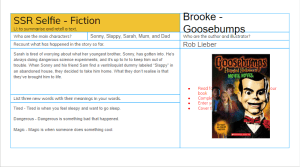This week for Miss White’s reading group we learned about the great pacific garbage patch, synthesizing, think about two sides of an issue, and to use prior knowledge and new ideas to create a new thought, idea, opinion or perspective.
What is the great pacific garbage patch? The great pacific garbage patch is three times the size of France and is the world’s biggest ocean waste repository, with 1.8 billion pieces of floating plastic which kill thousands of marine animals each year.
What is synthesizing? Synthesizing is where you put together prior knowledge and new ideas/information to create a new idea.
First, we had to discuss in a group what the great pacific garbage patch is and what is synthesizing. Great pacific garbage patch is a type of marine in the ocean where lots of plastic or type of rubbish is in. Synthesizing is where you think about two side of an issue.
Next, we had to make a copy of a document called synthesizing. We had to write down point 1 view. Point 1 view means that you have to write down yes of what people think’s about rubbish. Point 2 view means you have to write down the answer no of what the other people thinks and opinion means that you have to write down your answer or opinion about rubbish.
Lastly, we had to make a DLO explanning about the great pacific garbage patch. We had to write down what it is, where it is, how do you help it, and how do you prevent rubbish pollution. I made a animation about the great pacific garbage patch because I thought it will be cool and creative.
I enjoyed doing this task. I did well at explanning what the great pacific garbage patch is. I need to improve on adding more details.
